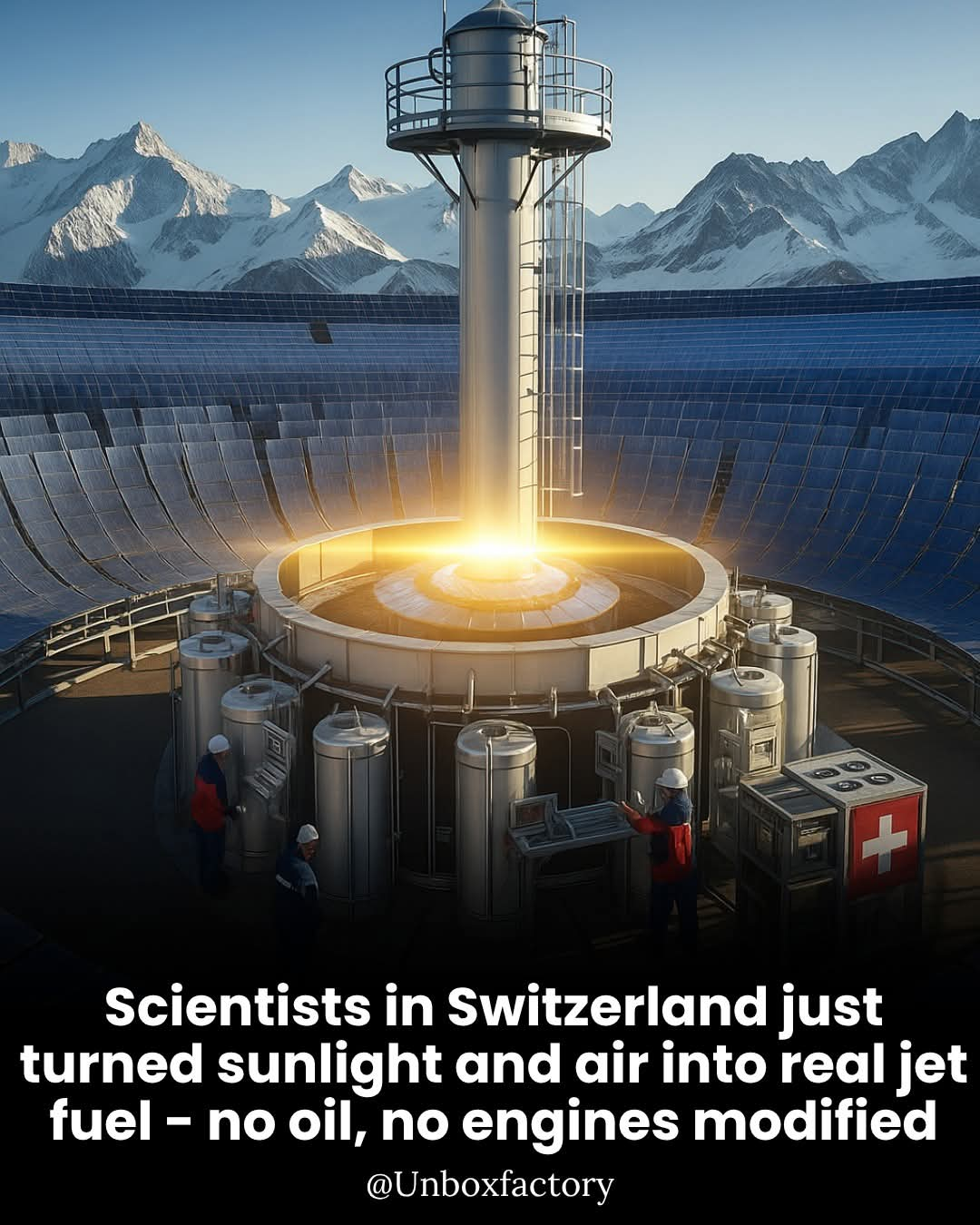In a world-first breakthrough, researchers at ETH Zurich have created synthetic jet fuel using only sunlight, carbon dioxide, and water. This solar-made fuel isn’t a prototype — it’s already being produced in a working pilot plant on the roof of ETH Zurich, and it can power today’s aircraft without any modifications.
This could mark a major turning point for aviation — one of the most difficult sectors to decarbonize.
How the Solar Fuel Process Works
The ETH Zurich team, led by Professor Aldo Steinfeld, has developed a solar thermochemical process that mimics natural photosynthesis — but at industrial speed and scale:
• Concentrated Solar Energy: Mirrors (heliostats) focus sunlight onto a solar reactor, heating it to around 1,500°C.
• Redox Chemistry with Cerium Oxide: Inside the reactor, cerium oxide (CeO2) is used as a reusable material that releases oxygen at high heat and then reabsorbs it at lower temperatures when exposed to CO2 and H2O. This produces syngas — a mix of hydrogen and carbon monoxide.
• Fuel Synthesis: The syngas is then fed into a Fischer-Tropsch reactor, which converts it into liquid hydrocarbon fuels, like kerosene (jet fuel) and diesel.
Why It’s a Game-Changer
• Carbon Neutrality: The CO2 released when the fuel is burned is equal to the CO2 extracted from the air to create it — forming a closed carbon cycle.
• Drop-In Ready: This solar fuel is chemically identical to fossil jet fuel, meaning it can replace petroleum-based kerosene in existing planes, storage tanks, pipelines, and refueling systems — no modifications needed.
• No Critical Materials: The process doesn’t rely on rare earth metals, lithium, or cobalt, making it more sustainable than battery alternatives.
• Land Efficient: Unlike biofuels, it doesn’t compete with food crops for arable land or freshwater — just sunlight and air.
• Desert Deployment Potential: The process is ideal for sun-rich, uninhabited areas, especially deserts, where solar radiation is plentiful.
The Pilot Plant: From Lab to Reality
• Located on the rooftop of ETH Zurich’s Machine Laboratory, the plant proves that solar fuel production works at real-world scale.
• In 2022, the team produced enough kerosene to demonstrate feasibility under actual atmospheric conditions — not just simulations.
• The next goal? Scaling up with industrial partners to build a solar fuel plant in the megawatt range — capable of producing thousands of liters per day.
What’s Next for Clean Aviation?
Global aviation currently accounts for 2–3% of global CO2 emissions, and the sector is projected to grow rapidly in the coming decades. While electric planes may serve short-haul routes, long-haul flights still require energy-dense liquid fuels. That’s where solar fuels shine.
ETH Zurich’s breakthrough offers a vision where solar energy, not fossil fuels, powers intercontinental flight.
With global climate targets pressing and net-zero goals looming, this innovation offers a rare combination of technical feasibility, environmental integrity, and economic scalability.
The future of flight isn’t just faster. It’s cleaner, brighter, and powered by the sun.
#SolarJetFuel #ETHZurich #CleanAviation #SyntheticFuel #GreenTechnology #FutureOfFlight #CarbonNeutral #ClimateSolutions #SwissInnovation #NetZero #FischerTropsch #DesertEnergy #FuelTheFuture #SustainableSkies
|
|

